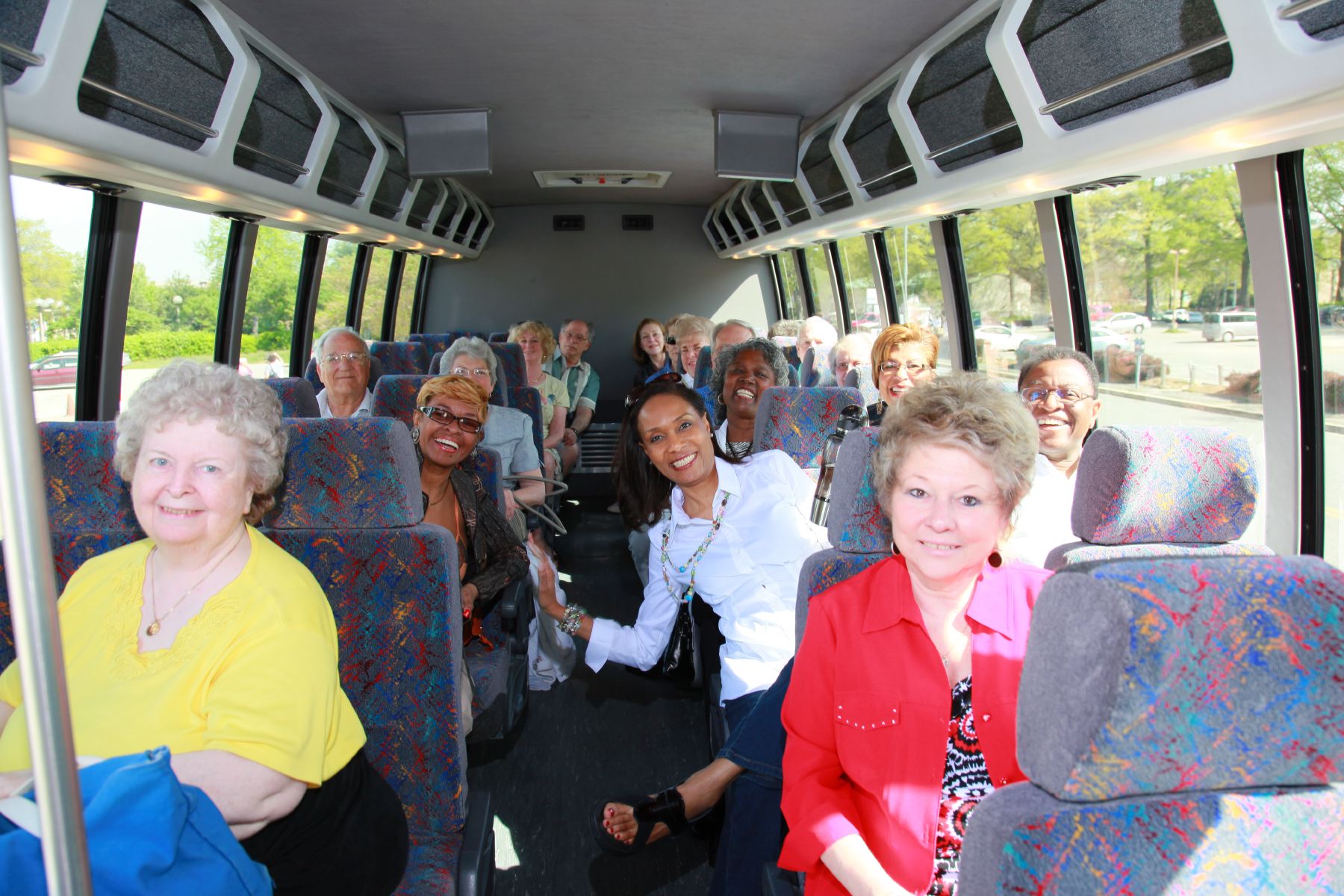Bus trips for senior citizens offer a fantastic opportunity to explore new places and create lasting memories. Whether it’s a relaxing day trip to a nearby historical site or a multi-day adventure through scenic landscapes, these journeys cater to diverse interests and mobility levels. Careful planning, including accessible transportation and well-structured itineraries, ensures a comfortable and enjoyable experience for all participants, fostering camaraderie and enriching the lives of senior travelers.
This guide delves into the various aspects of organizing and executing successful bus trips for senior citizens, covering trip planning, accessibility considerations, marketing strategies, and pricing models. We’ll explore different trip types, logistical details, safety protocols, and ways to ensure a rewarding and memorable experience for everyone involved.
Trip Planning and Logistics
Planning a successful bus trip for senior citizens requires meticulous attention to detail, ensuring comfort, safety, and enjoyment throughout the journey. Careful consideration must be given to all aspects of the trip, from the initial itinerary to the final transportation arrangements. Failing to plan effectively can lead to unforeseen complications and detract from the overall experience.
Effective trip planning involves a multi-faceted approach, encompassing itinerary design, accommodation selection, transportation coordination, and contingency planning. Each element plays a crucial role in ensuring a smooth and enjoyable experience for all participants.
Itinerary Creation
A well-structured itinerary is the backbone of a successful senior citizen bus trip. It should account for the physical limitations and needs of the group, incorporating ample rest periods and minimizing strenuous activities. The itinerary should be designed to provide a balance of structured activities and free time, allowing participants to explore at their own pace. Travel times should be factored in realistically, considering potential traffic delays and allowing for flexibility.
A detailed itinerary provides a clear roadmap for the trip, minimizing confusion and uncertainty. It fosters a sense of security and allows participants to anticipate and prepare for each day’s activities.
Accommodation Selection
Choosing appropriate accommodation is crucial for the comfort and well-being of senior travelers. Hotels or other lodging should be selected based on factors such as accessibility (e.g., elevators, ramps, grab bars), proximity to planned activities, and the overall comfort and safety of the facilities. Consider amenities such as single-level rooms, easily accessible restrooms, and comfortable seating areas. Prioritizing ease of movement and accessibility ensures that all participants can enjoy their stay without undue physical strain.
Careful consideration of accessibility features and overall comfort will ensure a positive experience for all participants.
Transportation Arrangements
Reliable and comfortable transportation is paramount for a successful senior citizen bus trip. The bus itself should be equipped with features that cater to the needs of older adults, such as ample legroom, comfortable seating, and accessible restrooms. The driver should be experienced and familiar with the route, capable of handling any unexpected delays or challenges. Regular rest stops should be incorporated into the itinerary to allow passengers to stretch their legs and use restroom facilities.
Ensuring safe and comfortable transportation minimizes stress and enhances the overall enjoyment of the trip.
Sample 3-Day Itinerary
This sample itinerary prioritizes accessibility and incorporates regular breaks for senior travelers.
- Day 1:
- 8:00 AM: Departure from designated pick-up points. (Allow extra time for boarding and settling in)
- 10:00 AM: Arrive at destination; check into hotel. (Allow ample time for check-in and settling into rooms)
- 11:00 AM: Guided walking tour of historical district (paced to allow for frequent rest stops)
- 1:00 PM: Lunch at a restaurant with accessible seating.
- 2:30 PM: Free time for relaxation or exploring at leisure.
- 6:00 PM: Dinner at the hotel or a nearby restaurant.
- 7:30 PM: Relaxation time/early evening activities.
- Day 2:
- 9:00 AM: Visit to a local museum (ensure wheelchair accessibility and appropriate pacing).
- 11:00 AM: Coffee break and light refreshments.
- 12:00 PM: Lunch at a casual eatery.
- 1:30 PM: Scenic drive through the countryside with multiple rest stops.
- 4:00 PM: Return to hotel, free time for relaxation.
- 6:30 PM: Dinner and optional evening entertainment (e.g., live music).
- Day 3:
- 9:00 AM: Breakfast at the hotel.
- 10:00 AM: Departure from hotel.
- 12:00 PM: Lunch stop en route.
- 4:00 PM: Arrive back at designated drop-off points.
Managing Travel Delays and Unexpected Issues
Unexpected delays or issues can arise during any trip. Having a contingency plan in place is crucial. This might include alternative transportation options, backup accommodation arrangements, and clear communication protocols. Keeping participants informed about any changes or delays is vital to maintaining their calm and understanding. The trip leader should have a designated point person who can address concerns and resolve problems promptly and efficiently.
Proactive planning and clear communication minimize the impact of unforeseen circumstances.
Clear and Concise Communication
Effective communication is the cornerstone of a successful senior citizen bus trip. Regular updates, both before and during the trip, should be provided to participants. This includes sharing the itinerary, providing contact information, and addressing any questions or concerns promptly. Using clear and concise language, avoiding jargon, and employing multiple communication channels (e.g., email, phone calls, written materials) can ensure that everyone is well-informed.
Open and transparent communication builds trust and ensures a positive travel experience.
End of Discussion
Planning and executing memorable bus trips for senior citizens requires careful consideration of various factors, from itinerary design and accessibility to safety protocols and marketing strategies. By prioritizing the needs and comfort of senior travelers, while also maintaining operational efficiency and profitability, organizers can create truly enriching experiences. These journeys offer not just sightseeing opportunities, but also a chance for socialization, adventure, and the creation of lasting memories. The focus should always remain on providing a safe, enjoyable, and enriching travel experience tailored to the specific needs and desires of the senior traveler.




